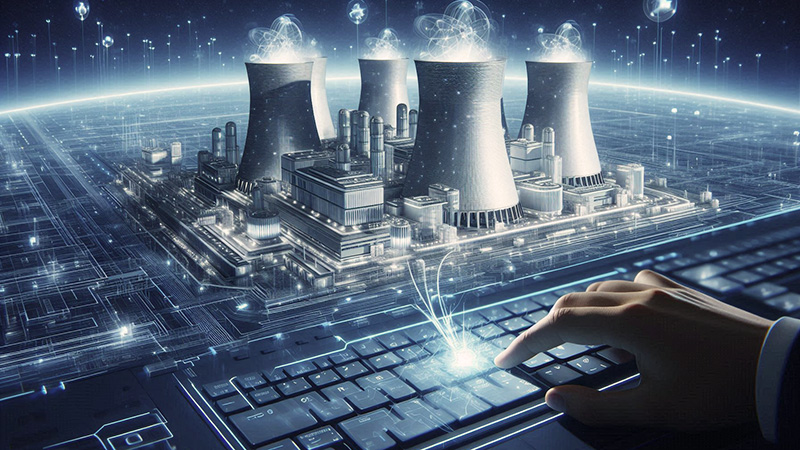

Essential Steps for Success:
The next era of energy innovation is defined by advanced nuclear technologies that offer scalable, sustainable, and secure power solutions. As the global demand for clean and reliable energy intensifies, small modular reactors (SMRs) and molten salt reactors (MSRs) are emerging as critical solutions for overcoming traditional nuclear challenges. Developing and commercializing these technologies requires a precise strategy, technical excellence, and an in-depth understanding of regulatory, financial, and operational frameworks.
Companies seeking to lead in the nuclear energy sector must adopt a multi-disciplinary approach that integrates engineering, regulatory compliance, funding acquisition, and industry partnerships. With extensive expertise in nuclear reactor design, high-performance simulations, regulatory approvals, and market deployment, leading experts in the field guide organizations through the essential steps to accelerate R&D, secure investment, and achieve commercial success.
Key Considerations for Developing Advanced Nuclear Technologies
1. Prioritizing Small Modular Reactors (SMRs) for Scalable Deployment
SMRs are redefining nuclear energy with compact, factory-built designs that enable rapid deployment and lower capital investment. Organizations aiming to develop SMR technology must focus on:
- Standardization & Modular Manufacturing – Implementing factory-built reactor components to reduce costs and ensure consistent quality.
- Regulatory Streamlining – Engaging with nuclear regulators early in the development process to facilitate design certification and operational licensing.
- Multi-Market Applications – Designing SMRs for grid stability, industrial heat applications, hydrogen production, and desalination to maximize commercial viability.
2. Advancing Molten Salt Reactor (MSR) Technology for Next-Generation Safety & Efficiency
MSRs offer inherent safety, efficient fuel utilization, and high-temperature operation, making them a key player in the future energy mix. To successfully bring MSRs to market, companies must:
- Develop Corrosion-Resistant Materials – High-temperature molten salt environments demand advanced structural materials and coatings to ensure reactor longevity.
- Optimize Fuel Cycles & Waste Reduction – MSRs have the potential to burn nuclear waste and utilize thorium, reducing long-term storage issues and enhancing sustainability.
- Implement Passive Safety Mechanisms – Unlike traditional reactors, MSRs operate at low pressure, mitigating accident risks and simplifying emergency response protocols.
3. Leveraging High-Performance Computing & AI for Reactor Development
Breakthroughs in nuclear energy require precision engineering and advanced simulations. Companies developing next-generation reactors must integrate:
- Computational Fluid Dynamics (CFD) & Neutron Transport Simulations – Utilizing supercomputers to optimize reactor core designs, coolant flow, and fuel burn-up efficiency.
- Machine Learning for Predictive Maintenance – Deploying AI-driven monitoring systems to detect and prevent system failures before they occur.
- Multi-Physics Simulation for Material Testing – Validating reactor components under real-world stress conditions to ensure performance and safety compliance.
4. Securing Regulatory Approval & Global Compliance
Navigating the nuclear regulatory landscape is a critical step in commercialization. Companies must:
- Engage with National & International Regulators – Establishing early dialogues with the U.S. Nuclear Regulatory Commission (NRC), the International Atomic Energy Agency (IAEA), and regional regulatory bodies to streamline licensing.
- Conduct Comprehensive Risk Assessments – Performing probabilistic safety analyses (PSA) and environmental impact studies to meet compliance standards.
- Align with Non-Proliferation Standards – Implementing secure fuel cycles and anti-diversion mechanisms to ensure regulatory approval for international markets.
5. Building Strategic Alliances with National Laboratories & Research Institutions
Access to cutting-edge research facilities and experimental reactors is essential for advancing nuclear innovation. Companies must:
- Establish R&D Collaborations with Select Universities & National Labs – Partnering with world-class nuclear research centers to leverage expertise in reactor testing and fuel cycle analysis.
- Secure Access to Supercomputing Resources – Utilizing national supercomputing facilities for high-fidelity modeling and simulation of reactor behavior.
- Develop Talent Pipelines – Supporting graduate and postgraduate nuclear engineering programs to cultivate the next generation of reactor scientists and operators.
6. Securing Investment & Government Funding
Advanced nuclear projects require significant capital and government support. To accelerate development, organizations must:
- Leverage Federal & State Grant Programs – Writing high-impact proposals for funding from entities such as the U.S. Department of Energy (DOE), Advanced Research Projects Agency-Energy (ARPA-E), and international clean energy initiatives.
- Attract Private Sector Investment – Demonstrating market viability, risk mitigation strategies, and long-term profitability to secure venture capital and corporate partnerships.
- Utilize Public-Private Partnerships (PPP) – Engaging with governments and industry stakeholders to de-risk financial commitments and facilitate large-scale project execution.
7. Addressing Supply Chain & Infrastructure Challenges
Nuclear energy development must account for global supply chain constraints, fuel sourcing, and infrastructure readiness. Key focus areas include:
- Establishing Domestic Fuel Supply Chains – Securing uranium enrichment, thorium procurement, and fuel fabrication capabilities to prevent reliance on geopolitical-sensitive sources.
- Enhancing Grid Integration & Load Balancing – Designing reactors that can seamlessly integrate with renewable energy sources to support low-carbon, flexible power generation.
- Developing Nuclear Component Manufacturing Hubs – Collaborating with industry suppliers and advanced manufacturing facilities to ensure reactor components meet high-precision engineering standards.
Final Considerations: Positioning for Long-Term Success in Advanced Nuclear Energy
For organizations aiming to lead in the nuclear energy sector, strategic planning, technical expertise, and regulatory foresight are essential. Achieving success requires:
- Early engagement with regulatory bodies to streamline approvals and reduce project delays.
- Investment in advanced modeling and AI-driven optimization to accelerate reactor development.
- Strategic partnerships with research institutions, government agencies, and private investors to secure funding and technical support.
- A clear commercialization roadmap, ensuring a scalable, sustainable, and profitable business model.
Advanced nuclear power represents a transformational opportunity for companies seeking to innovate in clean energy, reduce carbon emissions, and create a resilient power infrastructure. With the right strategy, expertise, and industry alignment, organizations can lead the global transition to next-generation nuclear energy—delivering secure, efficient, and sustainable power solutions for the future.



